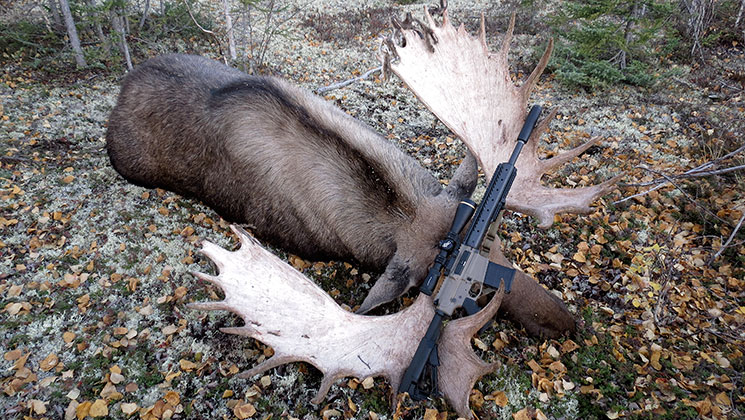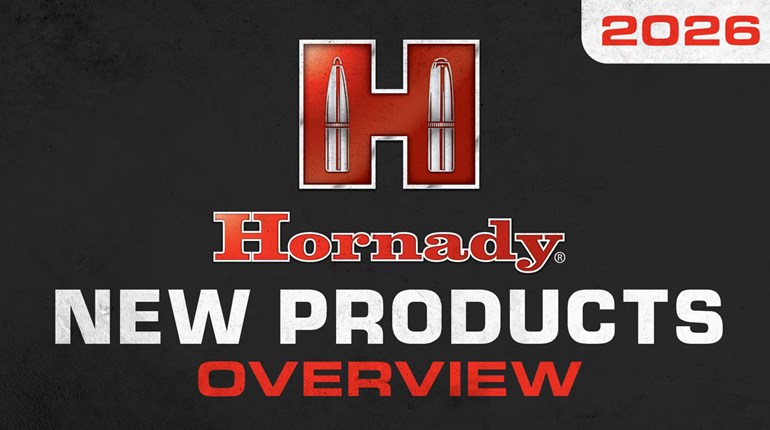
My good friend and hunting partner, Steve Bell from Olympia, Wash., and I were once again headed to Alaska to attempt to bring down a moose. We had struck out the previous year; even after floating for two weeks down a remote river, we just couldn’t seem to close the deal. The trip was successful on the caribou-hunting side of things, but we couldn’t seem to buy a moose sighting within range.
It can be extremely discouraging when you spend months preparing, many hours talking with locals and hunting facilitators, lay down hard-earned cash to pay for chartered flights, and check, check and recheck gear only to return home feeling like you failed. In the past, I have always tried my darnedest to fill tags but have come to the realization (or reality) that sometimes you won’t be successful. But sometimes not being successful in taking an animal results in a successful hunt nonetheless. We learned something about ourselves and Alaska on that first trip, after the temperatures dropped and we fought our frozen gear each day as we floated south.
With this memory—or, as we would call it in the military, an after-action review—we started to plan for revenge. Maybe revenge is a bad term, but the way I looked at it I absolutely wanted to get back in the fight—and this time be “successful” in the very real sense of the word. My wife, Melynda, knew it, too, which is probably why she gave me a small stone frame to put on my desk. It simply said, “Success is the Best Revenge.” How true is that?
So with lessons learned fresh in our mind, we plotted another moose hunt to Alaska. Our return was going to be a good one.
■■■
When Steve and I arrived in Fairbanks, we met up with our friend and bush pilot Jeff Wall. We purchased the last few tags we needed, checked zeros and packed gear into Jeff’s truck. We planned to drive to Yukon Bridge then shuttle our gear into a remote area we had scouted the prior year.
This time we decided to hunt with ARs. The U.S. military’s General Purpose Rifle is a great tool, and with the Hornady 165-grain SST .308 ammunition we chose (hornady.com), we were sure we could be deadly if we could just get a moose in our sights. I used a Smith & Wesson M&P 10 fitted with a suppressor, a Leupold LCO and Leupold D-EVO. Steve hunted with a Christensen Arms CA-10 AR with a carbon-fiber barrel, also fitted with a suppressor.
Christensen Arms, if you are not familiar with the firm, is a high-end firearm manufacturer that builds its rifles from the ground up in Gunnison, Utah. It has a great reputation as a go-to carbon-wrapped barrel manufacturer in the United States and the world. The company was founded by Dr. Roland Christensen (Doc referring to his PHD in carbon engineering), but Christensen Arms is not his primary business; his other company, ACT Aero, also in Gunnison, builds aircraft parts from carbon fiber as well. The fact that ACT Aero has the know-how when it comes to making a 40-foot wing spar from carbon that supports aerial flight leads me to believe folks there really know what they are doing. Jason Christensen, Roland’s son, is the president of Christensen Arms and a really good fella. His motivation is to provide hunters and shooters with superbly accurate gear, and to employ as many locals as possible in the manufacturing process. I must say he has succeeded on both fronts.
Christensen rifles are unbelievably light, and their accuracy is off the charts. To aid customer confidence, Christensen actually guarantees its bolt guns to ½-MOA and its gas guns to 1 MOA. If it doesn’t perform as promised, they fix it. How can you pass up a deal like that?
Steve topped his rifle with a Leupold VX-6 3X-18X optic. We were pretty sure we wouldn’t need to shoot too far, but with the VX-6 you get a lot of optic for not too much weight.
To keep things quiet, Steve attached an Asymmetric Product Development (APD) suppressor. Hunting suppressed is a real treat. You don’t have to worry about muzzle blast and ear plugs, and you also stand a good chance your prey will not spook when you squeeze the trigger. Sitting downrange when suppressed fire is flying, you really have a hard time pinpointing the whereabouts of the shooter. Luckily, moose don’t hunt back, but you can never be too safe: There is always a chance that there is a rabid moose that will attempt to maneuver on your position. Okay, of course I am joking. Bottom line: There really isn’t any reason not to use a suppressor.
■■■
So back to business: Moose are surrounding our position, and we think we may actually have to fight our way out of Fire Base Moose Knuckle. We have several near-death experiences with moose—their demise not ours. We have a small moose come to my poor calling, then we stumble into camp after a walkabout to see a legal moose standing within 25 yards of our fire pit. Before we know it the moose is gone and we have only the shakes and moose tracks to show for our trouble.
Later that same evening, we listened and watched a moose at the far side of the lake we were camped on as he chased a damsel in distress. She just wasn’t ready for any action so he made quite the show. I actually felt sorry for the poor fella. He tried so hard to court his maiden, but she was not having any of that.
The next day our resident expert landed back on the lake and was met by two extremely excited moose hunters jabbering in his ear. We had moose everywhere; we just needed to close the deal. Jeff, or “Loosey Moosey” as I now call him, was pretty relaxed. He said, “No problem. I’ll just call them across the lake into camp.” Of course this is impossible, or at least I thought it was.
The next day, with a moose in sight, Jeff put his Moose Erotica jargon to work. Before we knew it a moose was sliding into the lake headed directly for our camp. By nightfall, I had shot a 52-inch moose with my AR, and the work had really begun. The next morning I awoke at 0600 and rolled out of the Arctic Oven tent to brew up some java, and as I sipped on my first cup of the day I thought I was seeing an aberration. Across the lake there was a huge beaver mound that was the same color as a moose. For a week this pile of debris had caught our attention, but each and every time we looked through the binos, no matter how hard we tried we just couldn’t turn the dark mud into a moose. This morning was different. As I looked at the pile I immediately wrote it off as the beaver debris. But things were different this morning because it looked like there were two sheets of plywood on the side of the dirt pile. I grabbed my Leupold binocular and easily made out a huge bull, and noted he looked like he was walking our way. At the time he was more than a mile away.
 Now I was excited. I scampered to the tent to wake the two sleeping beauties who were cuddling inside. (Okay, they weren’t cuddling but it sounds better that way.) They wiped the sleep from their eyes, slid on their boots and made the long walk to the fire pit, approximately 10 yards. As I pointed out the moose, Jeff started whining through his moose horn. Before we could think twice the moose was headed straight to us. I couldn’t believe how fast he came—he wasn’t running but his smooth, easy gait covered ground quickly.
Now I was excited. I scampered to the tent to wake the two sleeping beauties who were cuddling inside. (Okay, they weren’t cuddling but it sounds better that way.) They wiped the sleep from their eyes, slid on their boots and made the long walk to the fire pit, approximately 10 yards. As I pointed out the moose, Jeff started whining through his moose horn. Before we could think twice the moose was headed straight to us. I couldn’t believe how fast he came—he wasn’t running but his smooth, easy gait covered ground quickly.
Jeff had rigged up a couple of branches in front of our fire pit for concealment, and Steve slid in behind this to have a little camouflage. Steve was calm, cool and collected. I, on the other hand, was a nervous wreck. I had nothing to do but talk smack and run the small video camera I had brought with me. Luckily I had a tripod as well, and this kept the camera from shaking as the moose closed the distance to within 40 yards.
As the bull turned broadside, Steve couldn’t immediately shoot because there was a large sapling covering the vitals. As I said, I was a wreck. This delay in action just about caused me to go into cardiac arrest. After what seemed an eternity, the bull took another step forward and Steve let go a well-placed Hornady 165-grain SST. The bull hunched slightly but didn’t run. I believe partly this was because of the APD suppressor. I have long been a fan of using a suppressor on an AR. When serving overseas, the suppressors on our carbines eliminated muzzle flash and helped to confuse the enemy all while keeping us more aware of our surroundings. Hunting with a suppressor is the way to go; you won’t disturb game and it virtually eliminates the need for hearing protection.
After the shot, the bull didn’t immediately tip over. We watched as the moose slowly started to fade. Without a shooting lane Steve could not finish him. After half a minute the bull tipped over, exposing his vitals, and Steve anchored him with another shot to the heart-and-lung area. I was a mess. I could not believe Steve and I had both killed our first bulls within the same 12-hour period. This had been a dream. I am sure both of us would have been content with only one of us shooting a bull, so having success all around camp made it a hunt of a lifetime.
■■■
Steve’s moose was considerably bigger than the bull I shot the day prior. He measured roughly 58 inches across the paddles of his prehistoric antlers. He was absolutely beautiful.
If you have never hunted moose, you should be aware that once they hit the ground all the fun is over. It is a lot of work to break down a moose into quarters and then transport it. Even though we had only a few hundred yards to carry it to the waiting floatplane, it was a job.
To further enhance the great memories of the moose hunt, Steve and I took home 500 pounds per man of prime, organic, free-range, grass-fed, drug-free moose meat. If you haven’t had Bullwinkle for breakfast you are missing a treat. Every member of my family agrees this is the finest big-game fare we have ever eaten at our table.
It may be a couple years before I can hunt moose again, but when I do I plan to have my good friend Jeff, aka the “Moose Whisperer,” in camp. I am pretty sure we will need Steve there as well.





































